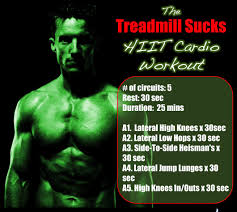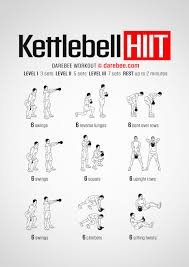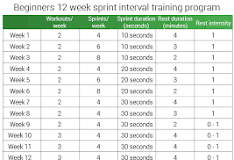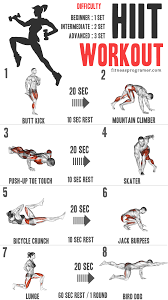The Benefits of HIIT Cardio Workout
High-Intensity Interval Training (HIIT) has gained popularity in recent years as an effective way to burn calories, improve cardiovascular fitness, and boost metabolism. HIIT cardio workouts involve alternating between short bursts of intense exercise and brief periods of rest or lower-intensity activity.
One of the key benefits of HIIT cardio workout is its efficiency. With HIIT, you can achieve significant results in a shorter amount of time compared to traditional steady-state cardio exercises. The intense bursts of activity elevate your heart rate quickly, allowing you to burn more calories in less time.
Additionally, HIIT workouts are versatile and can be adapted to suit different fitness levels and goals. Whether you’re a beginner looking to improve your endurance or an athlete aiming to enhance performance, HIIT can be customized to meet your specific needs.
Another advantage of HIIT cardio workout is its ability to continue burning calories even after the workout is over. This phenomenon, known as excess post-exercise oxygen consumption (EPOC) or the “afterburn effect,” means that your body continues to consume oxygen at an elevated rate post-exercise to restore itself to a resting state. This leads to increased calorie expenditure even after you’ve finished working out.
Incorporating HIIT cardio workouts into your fitness routine can also help prevent boredom and plateaus commonly experienced with repetitive exercise regimens. The variety in intensity and exercises keeps things interesting and challenges your body in new ways, helping you break through fitness plateaus and see continued progress.
Whether you’re looking to improve your cardiovascular health, burn fat, or boost your overall fitness level, incorporating HIIT cardio workouts into your routine can offer a range of benefits. Consult with a fitness professional to design a personalized HIIT program that aligns with your goals and abilities.
Understanding HIIT Cardio: Answers to Common Questions About Benefits, Differences, and Safety
- What is HIIT cardio workout?
- How does HIIT cardio workout differ from traditional cardio exercises?
- What are the benefits of incorporating HIIT into my fitness routine?
- Is HIIT suitable for beginners or only advanced fitness enthusiasts?
- How often should I do HIIT cardio workouts to see results?
- Are there any specific precautions or considerations to keep in mind when doing HIIT?
What is HIIT cardio workout?
High-Intensity Interval Training (HIIT) cardio workout is a form of exercise that involves alternating between short bursts of intense activity and periods of rest or lower-intensity exercise. This type of workout is designed to elevate the heart rate quickly and maximize calorie burn in a shorter amount of time compared to traditional steady-state cardio exercises. HIIT is known for its efficiency and versatility, making it a popular choice for individuals looking to improve cardiovascular fitness, burn fat, and boost metabolism. By incorporating HIIT into your fitness routine, you can experience a range of benefits such as increased calorie expenditure, improved endurance, and continued progress in your fitness goals.
How does HIIT cardio workout differ from traditional cardio exercises?
High-Intensity Interval Training (HIIT) cardio workouts differ from traditional cardio exercises in their approach to intensity and duration. While traditional cardio exercises typically involve steady-state activities performed at a moderate intensity for an extended period, HIIT workouts alternate between short bursts of high-intensity exercise and brief periods of rest or lower-intensity activity. This alternating pattern challenges the cardiovascular system in a different way, leading to increased calorie burn, improved cardiovascular fitness, and enhanced metabolism. The intensity of HIIT sessions can be adjusted to suit individual fitness levels and goals, making it a versatile and efficient option for those looking to maximize their workout results in a shorter amount of time.
What are the benefits of incorporating HIIT into my fitness routine?
Incorporating High-Intensity Interval Training (HIIT) into your fitness routine offers a multitude of benefits. One key advantage is the efficiency of HIIT workouts, allowing you to achieve significant results in a shorter amount of time compared to traditional cardio exercises. HIIT helps boost metabolism, burn calories, and improve cardiovascular fitness through its intense bursts of activity and brief rest periods. Additionally, the afterburn effect of HIIT means that your body continues to burn calories even after the workout is over. The versatility of HIIT allows individuals at different fitness levels to tailor their workouts to meet specific goals, making it a dynamic and effective addition to any fitness regimen.
Is HIIT suitable for beginners or only advanced fitness enthusiasts?
High-Intensity Interval Training (HIIT) can be suitable for beginners as well as advanced fitness enthusiasts, with modifications to accommodate varying fitness levels. Beginners can start with shorter intervals of high-intensity exercise followed by longer rest periods to build endurance gradually. As fitness levels improve, they can increase the intensity and duration of the intervals. It’s important for beginners to listen to their bodies, start at a comfortable pace, and gradually progress to more challenging workouts. Consulting with a fitness professional can help beginners design a safe and effective HIIT program tailored to their individual needs and goals.
How often should I do HIIT cardio workouts to see results?
To see results from HIIT cardio workouts, consistency is key. It is generally recommended to incorporate HIIT sessions into your weekly routine 2-3 times a week for optimal benefits. This frequency allows your body to recover between intense sessions while still reaping the metabolic and cardiovascular advantages of high-intensity intervals. However, individual fitness levels, goals, and recovery abilities should also be taken into consideration when determining the ideal frequency of HIIT workouts. Listening to your body and gradually increasing the intensity and frequency of HIIT sessions as you progress can help you achieve desired results while minimizing the risk of overtraining.
Are there any specific precautions or considerations to keep in mind when doing HIIT?
When engaging in High-Intensity Interval Training (HIIT), there are several precautions and considerations to keep in mind to ensure a safe and effective workout. It is important to start with a proper warm-up to prepare your body for the intense bursts of activity and reduce the risk of injury. Additionally, listen to your body during the workout and modify the intensity or duration as needed to avoid overexertion. Proper form is crucial in HIIT exercises to prevent strain on muscles and joints. Stay hydrated throughout the workout and allow for an adequate cool-down period at the end to help your body recover. If you have any underlying health conditions or concerns, consult with a healthcare provider before starting a HIIT program to determine if it is suitable for you.




